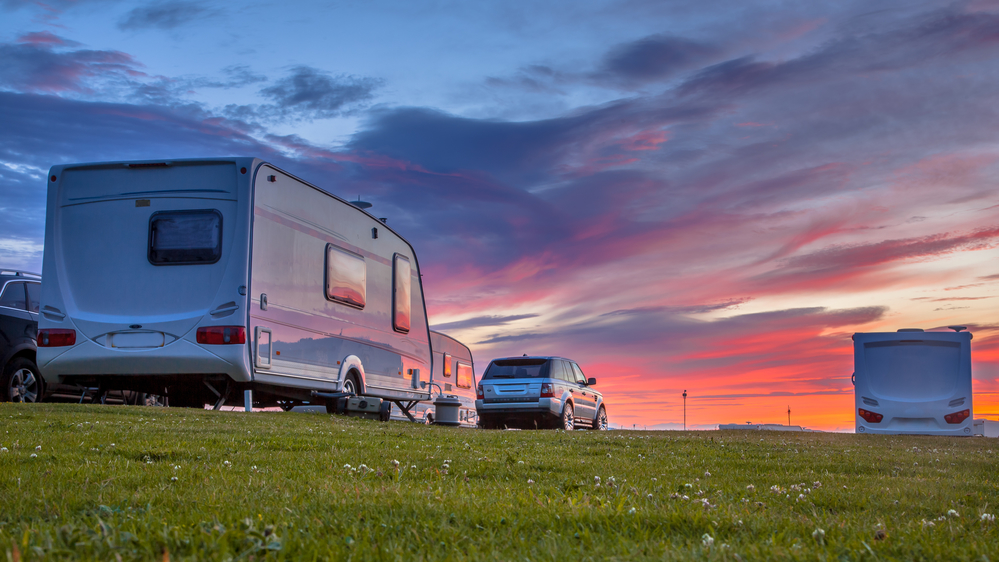
Many factors determine how much you must pay for your touring caravan insurance. One detail that might not be immediately apparent is where your caravan is stored when it is not in use – during the colder winter months, for example.
Wherever you choose to store your caravan can have a significant impact on the price of your insurance premiums.
Why is this?
Naturally, your touring caravan is a relatively lightweight construction – that’s what helps to keep it so mobile and manoeuvrable. The downside, though, is that such a construction makes it more than usually difficult to keep it secure against unwanted intruders.
Whenever your caravan is in storage, you will make sure that doors and windows are locked, of course. But those precautions alone are unlikely to provide complete security during times when the caravan is left on its own for prolonged periods of time.
Keeping your caravan away from unwanted attention and interference, therefore, is more likely to depend on the security of the location at which it is kept.
It is also important to note that if you change the storage location of your caravan, you must inform your insurance provider immediately – for the reasons we’ve explained here. This is important if your ‘van is parked up somewhere on holiday perhaps, and you leave it at the holiday site overnight and unattended.
Choosing a storage site
Wherever you live, the level of security that you are likely to be able to provide on your own driveway at home is typically quite limited.
For storage security on which you can rely, there is a network of some five hundred purpose-designed sites at various locations around the country. Sites are members of the Caravan Storage Site Owners’ Association (CaSSOA), which grades each one according to the level of security offered, depending on features such as:
- the alarm systems installed;
- controls installed at the points of entry to the site;
- the nature and security of the site’s perimeter fencing; and
- whether or not CCTV has been installed.
Depending on the site you choose, you may even be able to store your caravan undercover – although the locations offering this facility are relatively few and far between.
Rather more certain, however, is the recognition your insurer is likely to give to the enhanced security available at a CaSSOA-approved site. It is recognition most likely to result in your being granted a significant discount on the annual insurance premiums you pay if storage is at an accredited site. At Cover4Caravans, for example, we offer up to a 20% discount on the cost of your caravan cover for ‘vans stored at a CaSSOA-approved storage site.
When choosing a site – even one that is advertised as a CaSSOA member – it is still important that you also double-check with the official CaSSOA website and make sure that you feel comfortable with the security offered.
During the winter months, your tourer might safely be laid up for the duration. That is when your choice of location is likely to be critical to its security and safety during the more punishing weather that winter in this country inevitably brings.
Obviously, you’ll need to avoid a location underneath trees or close to dilapidated buildings where storm-damaged branches may fall, or slates and other debris may be blown onto your caravan.
Getting your ‘van ready for storage
Now you’ve chosen the right caravan storage site for your particular needs and circumstances, how do you get your ‘van ready for storage?
Having washed down the exterior of your caravan to remove bird lime and other damaging pollutants, you may be tempted to keep it as clean as possible by storing it under plastic sheets or tarpaulins.
Most experts warn against such a measure because of the very real risk of such airtight coverings contributing to one of the worst nightmares for any caravan owner – condensation. Unless the interior remains adequately ventilated, there is a danger of condensation building up and creating the almost intractable problems that may bring in the way of damp and mould – which are not only unsightly but may also pose a health risk and lead to rotting of the very structure of your caravan.
If you insist on storing your caravan beneath a tarpaulin, therefore, you might want to make sure that it is made from a “breathable” material.
Charcoal, salt, or other proprietary granules used for absorbing moisture in the atmosphere may be put in cupboards and wardrobes – with the doors left ajar.
Safety
Some measures for keeping your caravan safe during storage may also involve you taking steps to improve security.
This may also be an ideal time to check that the hitch coupling is thoroughly cleaned and adequately greased.
The safety measures you may take while preparing your caravan for storage are likely to include checks for gas leaks and the proper functioning of any gas appliances.
In the relatively closed confines of a caravan, the safety of any gas installation may be especially important in order to prevent the potentially fatal risk of carbon monoxide poisoning – a risk you may feel to be sufficiently serious to call in an appropriately trained and accredited gas engineer to check over the gas equipment.
The safety and integrity of electrical supply lines and equipment will also need to be checked.
Further reading: Guide to Caravan Storage and Security
Finally, why not watch our two short videos for further information and tips: Caravan Security and Insurance Video and Caravan Storage and Insurance.

